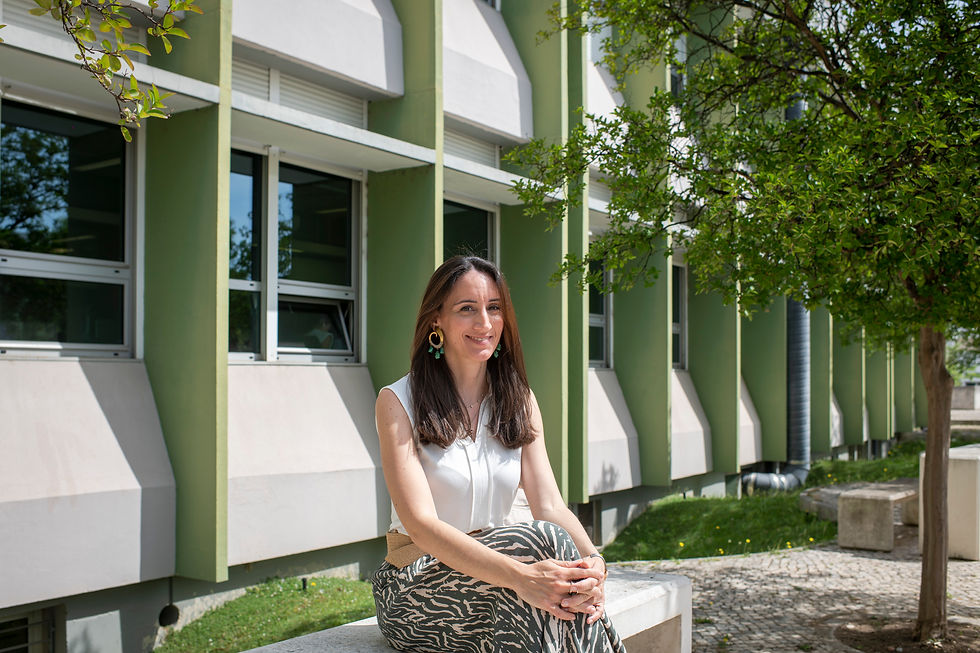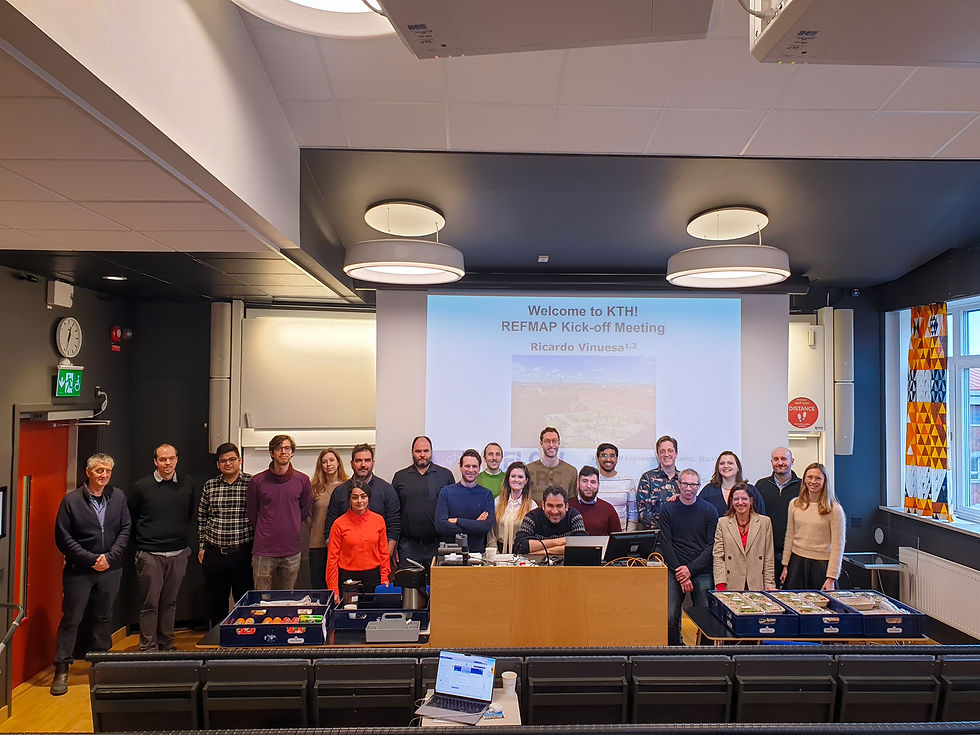Sofia Kalakou, ISCTE University partner at RefMap project speaks to EntreCampus magazine
- RefMap

- Nov 20, 2023
- 4 min read

(Photo credit: Luísa Ferreira)
In this insightful interview, Sofia Kalakou from ISCTE University and partner in the RefMap projects talks to Luisa Rego for EntreCampus magazine. She explains how the RefMap project will help stakeholders in aviation make more sustainable decisions with a positive impact on the environment, the aims of the European Commission in the transportation field, the role of ISCTE in the project, the drones' potential in the field, and the collaboration with other partners.
What are the ambitious results of the RefMap project?
We aim to create models that will simulate the environmental impacts of short-haul and long-haul aviation - from airplanes, air taxis, and drones. We plan to create models, using Artificial Intelligence technology, which will then be integrated into a tool, a software, which will combine the various impacts, enabling us to make the service available to all relevant decision-makers and stakeholders.
The existence of this tool will create business opportunities and will force stakeholders such as airlines and airports to rethink how they want to operate. For example, based on environmental aspects, we could decide where we want to have a new airport and how we want to allow the use of drones in inhabited places. A tool like this will create many business opportunities.
To minimise emissions, we know that trains are less polluting than planes...
Some innovations in aviation, like sustainable aviation fuels and hydrogen, promise cleaner utilisation. On the other hand, if aviation doesn't become greener, regulators will want to impose more requirements on stakeholders. At the level of the European Commission, the aim is to make the transport sector greener. With the efforts being made, we believe that decision-making will be more judicious.

(Photo credit: Luísa Ferreira)
How did ISCTE get involved in this project?
Iscte - Instituto Universitário de Lisboa, was invited into the project by Anna Palaiologk, founder and researcher at Future Needs, a social science and consulting company active in the area of transport and sustainability, who actually brought together most of the consortium. The university leading the RefMap project is the KTH Royal Institute of Technology in Stockholm, headed by Prof. Ricardo Vinuesa. All the partners involved in the project have been having collaborations in research projects and the central idea for this project has been maturing for a long time.
As the call' title and contents, contrary to most Horizon topics, this time focused on impact and future business models (in aviation), the first partners on board were not the technical ones. It was Future Needs whom we work with on the Business Modelling Work Package who initiated the contacts. As with all areas, a one-dimensional approach has its limits, so one by one more brilliant minds from a variety of disciplines joined in. On one hand, the group of people trying to optimise aircraft trajectories is minimising the impact of emissions and noise, as well as the subsequent disruption to human and animal life. Our main aim remains to respond to the needs of the industry and the needs of the people who are going to make decisions, the airlines, the airports, the cities, and the transport technology companies.

The groups of people carrying out the research in the project are:
Ricardo Vinuesa (Associate Professor, ERC CoG ) and Evelyn Otero (Associate Professor of Aeronautics and Vice-Director of the Center for Sustainable Aviation 's groups from KTH Royal Institute of Technology
Manuel Fernando Soler Arnedo (Director PhD Program Aerospace Engineering)’ s group from Universidad Carlos III de Madrid
Antonio Torija Martinez (Assistant Professor)' s group from the University of Salford
Clara Garcia Sanchez’s (Assistant professor) and Mirjam Snellen (Professor Acoustics)'s group from Technische Universiteit Delft
Milan Rollo’ team (CTO) from AgentFly Technologies SRO
Anna Palaiologk 's (research and business development manager) team from Future Needs Management Consulting Ltd
Sofia Kalakou (Assistant Professor)’s group from Instituto Universitário de Lisboa
Gareth Whatmore (CEO)’s team from DronePrep
Edo Leonen (Product Manager Environment & Sustainability)’s team from S[&]T
Sotirios Xydis’ team from ICCS research institute of National Technical University of Athens (NTUA)
Simon Blakey’s group from the University of Birmingham
Access to drones has created the need to bring long-haul aviation expertise to the city dimension. We are in a transitional phase and there are already a large number of regulators dealing with this issue at the European level, but there is also pressure to have tools that allow these new technologies to be introduced into the city, without creating problems on a day-to-day basis. We have gained experience in this integration in another project and we are going to transfer this knowledge to RefMap, where besides airplanes, we're also going to work with new vehicles, hydrogen-based, air taxis, and drones.
Is the project paying attention to drones, a vehicle with a wide variety of devices where there is still a lack of legislation on how they should operate?
Yes, there is large-scale commercial use. And this lack begins in Europe. At the moment, the European Aviation Safety Agency, which is leading this issue, is creating the regulations. Since last year there have been regulations on the environment in which drones can be used, but it's also true that the agents involved in these processes are not aware of the responsibilities they will have.
Each country will have to define its internal conditions on its own, with the cooperation of various players: governments, national aviation authorities, operators, and the cities themselves. Cities have a very strong role, as they will be the ones to define where they allow new aviation technologies to be used. It will take time to coordinate all the decisions and the wills of the different players.
How will you work together with your partners?
Our technical partners will develop algorithms and simulate the impacts. Then ICCS and Agentfly will integrate everything into a tool (software) and we, ISCTE together with Future Needs, will elaborate on how the business opportunities may be exploited. We'll do this by working with people who are part of the project, but also from outside.
We plan to conduct interviews with 100 people from the regulatory field, airlines, airports, cities, and aviation experts, who will help us understand which are the most useful indicators we want to have in the tool, to pass on to the decision-makers. We're going to collect information from end users by analysing specific scenarios. The tool will show values, indicators, and impact distribution maps that stakeholders can use.







